If trends continue, SIUE could surpass SIUC in students
Pulliam Hall can be seen Jan. 30, 2017, on the university’s Carbondale campus. (Jacob Wiegand | @jawiegandphoto)
January 31, 2017
The university on Tuesday released its 10-day enrollment figures, which show a continuing trend at the system’s largest campus.
SIUC recorded a loss of 1,170 students from the year before, putting its total at 14,636, more than 12,600 of which take classes on campus. While the Edwardsville campus has not released its enrollment figures, officials there are projecting its second highest all-time spring enrollment.
Over the last two decades, the Carbondale campus has seen a generally consistent decline in students while enrollment at the Edwardsville campus has steadily risen.
Advertisement
In fall 1975, when total enrollment figures were first available for both campuses in the university’s factbook, the Carbondale campus saw a total enrollment of 21,214. It peaked in fall 1991, when enrollment totaled 24,869.
While spring enrollment is not tracked in the factbook, fall enrollment has not dipped below 15,000 since 1965.
At one point, enrollment at the Carbondale campus more than doubled that of the Edwardsville campus. But in fall 2016, total enrollment at the two was within 2,000 students of each other.
University officials attributed this trend to a number of factors, including location, facilities and the state’s budget stalemate.
The future of the two campuses
During the next two to three years, while hoping the state’s budget crisis comes to an end, SIU President Randy Dunn said the Carbondale campus is going to work to increase its enrollment.
“If we can’t, we cannot maintain the physical and organizational infrastructure we have for the number of students presently,” he said. “We cannot do that for the long haul.”
Advertisement*
When asked if SIUE — which recorded 14,142 students in fall 2016 — could become the system’s flagship campus, Dunn rejected the notion that the university network has a most important campus. But he said there is a possibility the Edwardsville campus could surpass the Carbondale campus in enrollment during his tenure as president, which was recently extended through June 30, 2022.

While there would be little immediate effect if SIUE exceeds SIUC in enrollment, Dunn said the SIU Board of Trustees would have to review how the system appropriates funds to each campus.
Dunn said given the modest growth at SIUE, the university is going to have to help the campus fund construction to keep up its facilities until Illinois gets a capital budget.
“Edwardsville had to go in with their own money and finish out some auditorium space in one of their science buildings because they had kids needing lecture halls and they had no place to go,” he said.
Dunn said he knows there is room for the Carbondale campus to grow “because we are sitting with empty seats all over the university right now.”
The Carbondale campus can increase its enrollment, Dunn said, if it emphasizes its signature majors and considers adding new bachelor’s degrees that are integrated and have been successful across the country. Those could include non-profit leadership and management, disability studies and advanced manufacturing, which Dunn described as “the buzz across the entire country.”
“There is a sweet spot for SIU Carbondale,” Dunn said of its enrollment. “It may not be 20,000 or 22,000, but I can guarantee you it can be more than 16,000.”
A state struggling to support higher education
While the Carbondale and Edwardsville campuses vary in numerous ways and offer different programs, administrators at both say they have felt ripple effects from the ongoing budget clash in Springfield, especially when it comes to enrollment.
SIUC interim Provost Susan Ford, who has worked for 38 years on the Carbondale campus, said the continuing negativity about the impasse felt like a “flood coming at us … that we could not control.”
Ford, who analyzes enrollment trends and data that help shape the university’s enrollment strategy, said a larger percentage of people who were admitted to the Carbondale campus in fall 2016 went to out-of-state colleges compared to 2012 and 2013. This, she said, shows the state’s budget crisis made a substantial difference.
Since July 2015, Republican Gov. Bruce Rauner and Democrats who control the state Legislature, including House Speaker Michael Madigan, have failed to come to an agreement on a state spending plan.
In 2016, two stopgap measures passed by the Legislature allocated $83 million in support for SIU. That money, for the most part, paid the bills from the 2016 fiscal year, in which Illinois was the only state in the nation without a budget.
A majority of public universities in the state recorded losses of total enrollment in fall 2016.
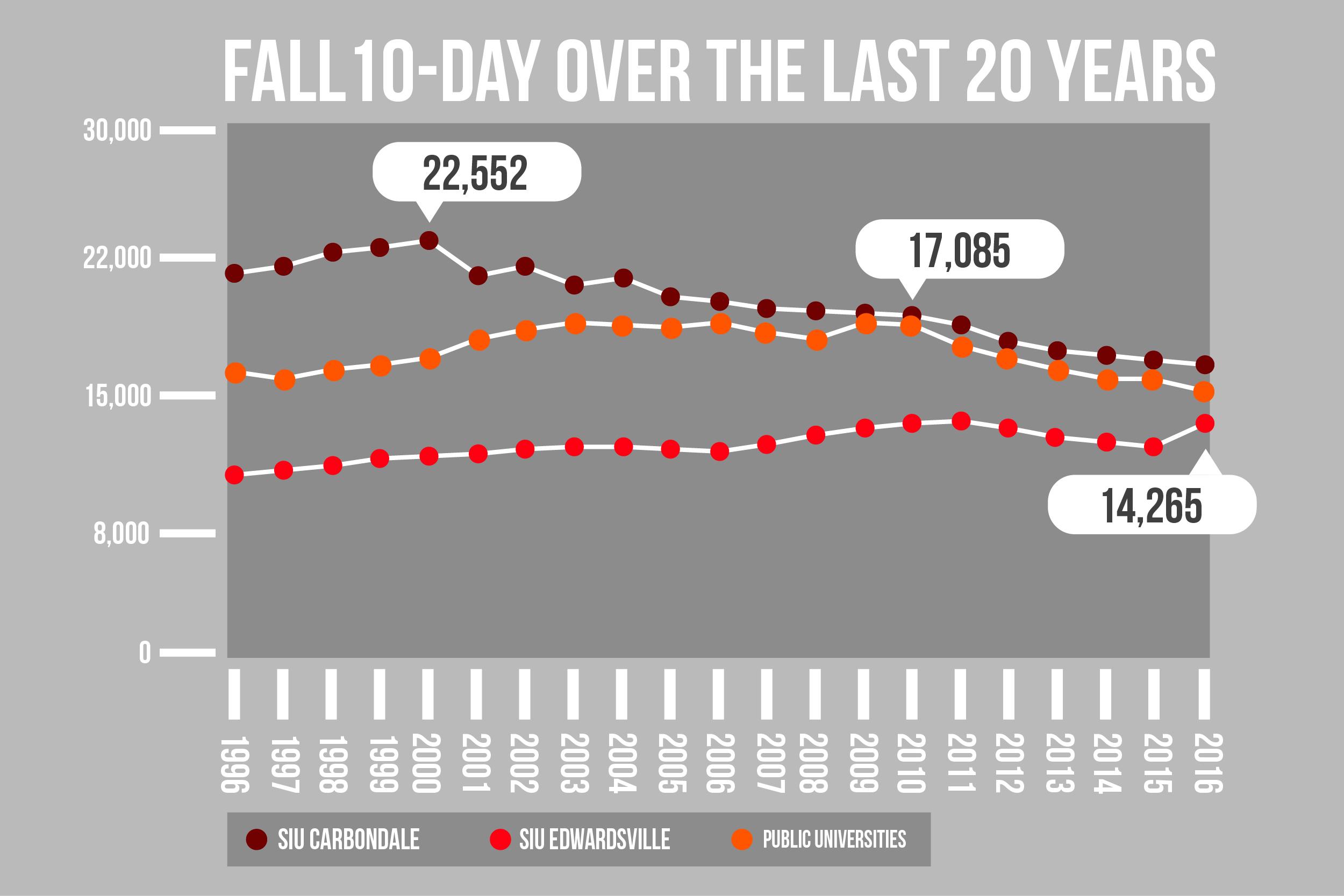
The provost said she has not examined the zip codes of the students who were admitted to SIUC and went elsewhere, which would show whether out-of-state applicants went outside Illinois or if in-state applicants went elsewhere.
Ford’s guess? It’s both.
Meanwhile, Ford said the state’s budget deadlock also harmed the university’s ability to keep students. She said although the campus retained more juniors and seniors in fall 2016, the budget impasse negatively affected retention of freshman, who typically take general education classes that are transferrable.
“If you’re a junior and you’re worried, you’re going to say, ‘I’m just going to hope that everything is going to be OK and I’m going to finish my degree,’” Ford said. “If you’re a freshman, you might say, ‘Well, maybe I’ll go to the University of Missouri. Maybe I’ll transfer to the University of Kentucky. Maybe I’ll pick up and put my trust in another state.’”
Selling the university amid the state’s fiscal crisis
During separate interviews, Rae Goldsmith, SIUC’s chief marketing and communications officer, and Nathan Brewer, SIUE’s director of marketing, agreed that the state’s budget impasse has made it more challenging to recruit students. Goldsmith said it has “handicapped us significantly.”
The stalemate has scared potential students and their parents, Goldsmith said, which wasn’t helped when a TV reporter in December 2015 incorrectly reported that SIU could shut down if a budget decision wasn’t reached within several months.
“We’re going to be here,” Goldsmith said, reiterating that SIU is not closing. “But the lack of confidence in the state is hurting us.”
Goldsmith said institutions in other states have been heavily marketing in Illinois, using the state budget as a way to recruit students.
In August, Southeast Missouri State President Carlos Vargas told the St. Louis Post-Dispatch that his university has increased targeted marketing in parts of Illinois. For fall 2016, according to its first-day enrollment figures, SEMO — a school of some 11,500 students — reported a record number of Illinois students at 331, a nearly 50 percent increase from fall 2012.
In 2010, five years before Illinois started making national headlines for its budget problems, the university hired marketing and communications firm Lipman Hearne to increase enrollment and create a new image for the Carbondale campus, which for decades had been known as a party school. The original agreement was a $1.5 million, two-year contract, which was renewed for $2 million for two years in summer 2012.
The trustees chose to renew the firm’s contract again for one year in May 2013, requesting more results for an extension past 2014. But at its June 2014 meeting, the board voted to not extend its partnership with Lipman Hearne, citing its inability to market the campus, which saw a decline of nearly 2,000 students from when the firm was first hired.
At that meeting, then-board Secretary Don Lowery criticized the firm, saying, “I’ve seen some of that creative work — billboards that say, ‘Brain meet heart at SIU,’ and I fail to see much creativity in that. … I haven’t seen anything that seems to implement students to come here.”
The campus no longer uses an outside firm, which allows SIUC’s marketing department to be more hands-on and effective, Goldsmith said.
She said the Carbondale campus competes with other large, nationally ranked research universities, where students may feel like just another number. The campus tries to sell potential students on the thought that SIUC students learn from and work closely with some of the best professors in the country while improving their resumes through out-of-classroom experiences.
The university system president said while this concept is crucial, the Carbondale campus — which is about 10 miles from Giant City State Park and three miles from the Shawnee National Forest — needs to better market its access to outdoor activities and its proximity to the Shawnee Hills Wine Trail.
“We get so concerned about making sure that everybody in the world understands that we’re a research institution that we forget it’s a variety of things,” Dunn said. “All due respect to the campus, a lot of 17-year-old high school juniors and seniors and their parents aren’t quite sure what [a research institution] means.”
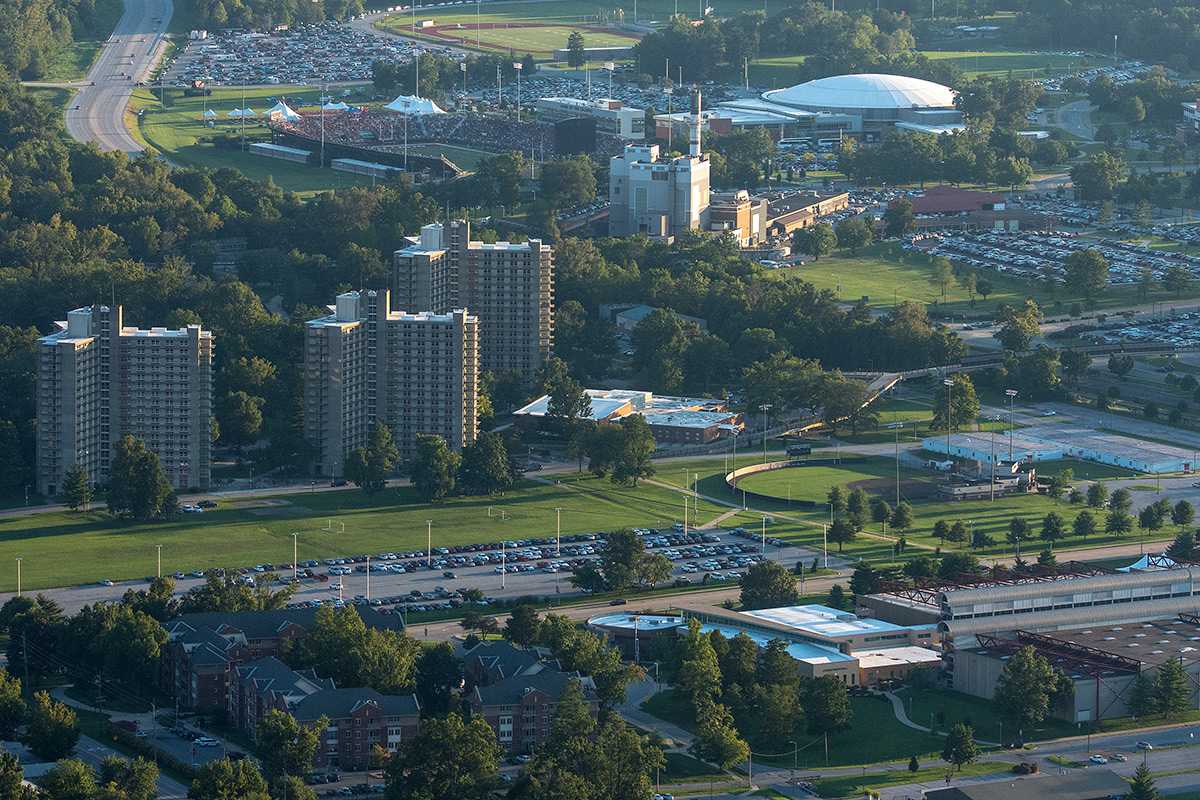
Each campus spends about $1 million a year on advertising, Goldsmith and Brewer said.
While the Carbondale campus heavily markets itself in Chicago and St. Louis, Goldsmith said it more recently has been trying to draw in students from central Illinois, particularly Springfield.
Ford said the campus also recruits from pockets of southern California, Florida, Arizona and Texas, especially Dallas, where many SIUC alumni work in the aviation industry.
Another important aspect of recruiting? Word of mouth, Goldsmith and Brewer said. Ford agreed, saying the state’s budget dysfunction has caused some faculty and staff to become “demoralized” when they have bad days, which does not look good to prospective students visiting the campus.
Housing and location
Administrators in Carbondale and Edwardsville attribute the trends in enrollment at the two campuses to location and facilities, especially residence halls.
To increase enrollment and improve retention on the Carbondale campus, the university system’s board of trustees is considering a $257 million plan to tear down Neely, Mae Smith and Schneider halls, collectively referred to as “the towers,” and replace them with new dorms over the next decade.
The plan proposes constructing four five-story buildings, which will each have either two or three wings. Each wing is considered its own house, University Housing Director Jon Shaffer has said, and will consist of no more than 18 students.
This is an effort to make students feel less anonymous than they might in the three high-rises on East Campus, which have the capacity to house 50 students on each on their 17 floors.
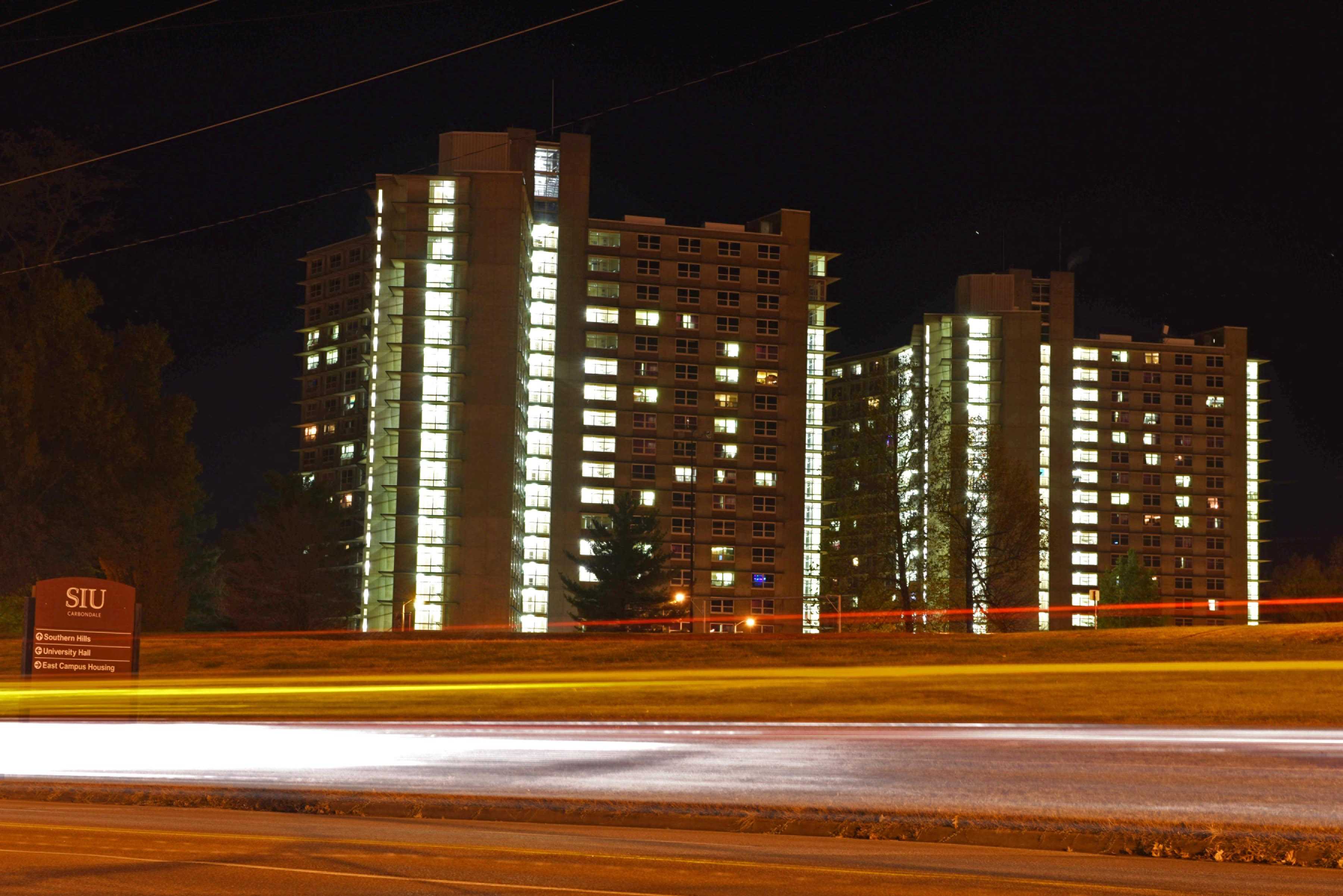
Ford said approval of the new residence halls would carry a message of permanence, which would better help assure prospective students that the campus will exist for several decades.
“No institution would launch something like that if they didn’t expect to be here for 12 more years and 20 or 30 more years beyond that to make use of those residence halls,” she said.
As for location, Dunn, who has four adult children, said prospective college students look for activities they enjoyed before considering college, such as going to places to eat, drink and listen to live music. He said Carbondale is working on what he calls these “community amenities,” such as cleaning up the Strip and adding new restaurants.
“If you look at Edwardsville, the city of Edwardsville itself resembles any other suburban community you want to find in the country,” Dunn said of the municipality in the Metro East, a region that has the largest concentration of people in the state outside of Chicagoland. “In 15 minutes, you can be in downtown St. Louis. Proximity to an urban area is something many students — not every — but for many students is an important factor.”
Scott Belobrajdic, who since 2006 has worked as SIUE’s associate vice chancellor for enrollment management, harped on this point, saying it takes him just 20 minutes to get from campus to a Cardinals baseball game.
Some administrators said while this is a draw, the Carbondale campus has more intercollegiate sports programs, including a Division I football team.
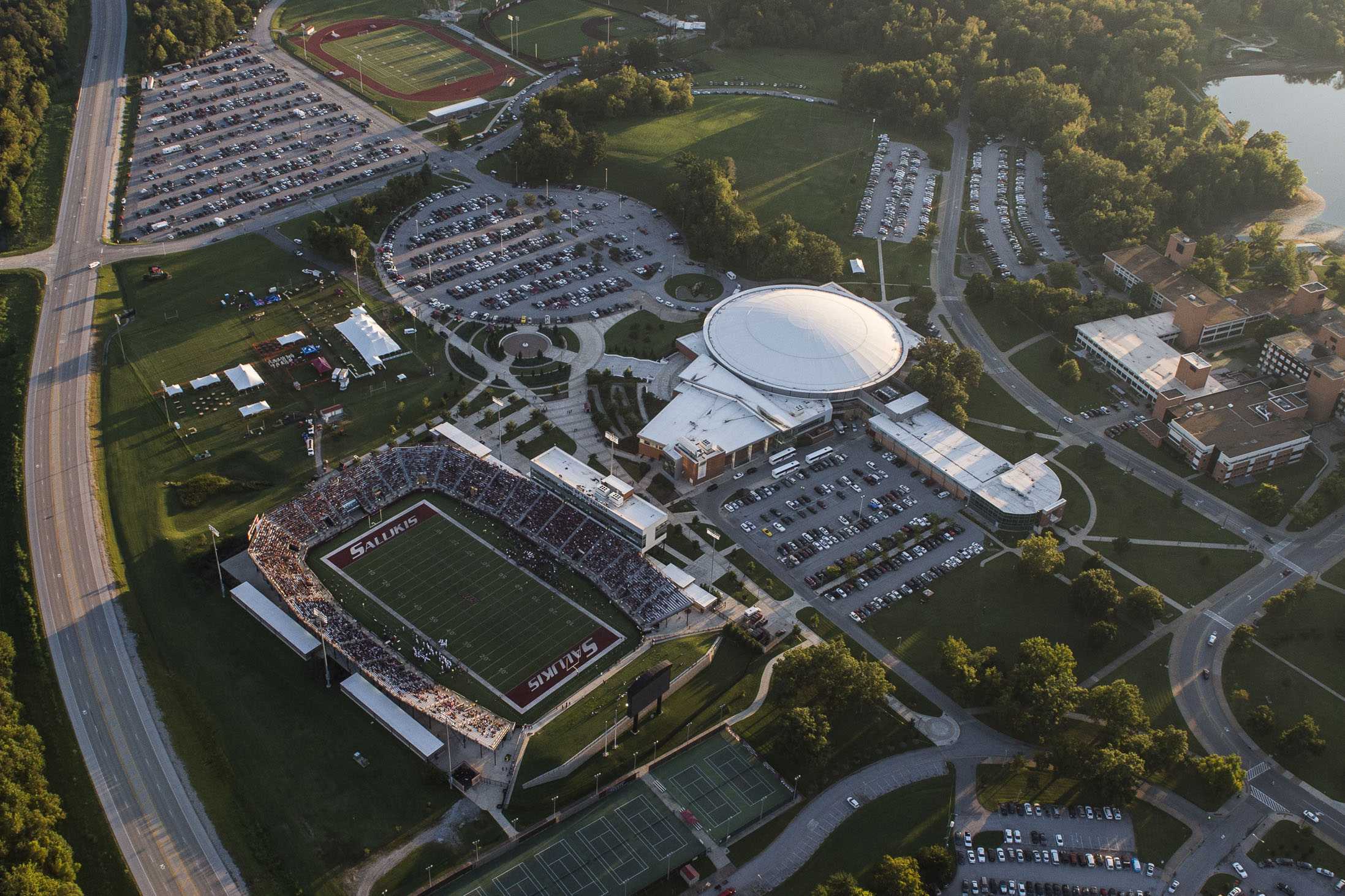
Once SIUC eliminates its men’s and women’s tennis teams after the spring semester — which Athletic Director Tommy Bell attributed in part to the ongoing decline in revenue from student fees — the campus will have 16 teams compared to SIUE’s 14.
At SIUE, students ‘come locally and stay locally’
For SIUE Chancellor Randy Pembrook, choosing the university’s Edwardsville campus as an undergraduate was logical.
Pembrook, of Greenfield, a town about an hour northwest of Edwardsville, began his college career at Lewis and Clark Community College in Godfrey. As a first-generation college student, Pembrook chose to attend SIUE because the chair of Lewis and Clark’s music department, an SIUE graduate, had great respect for the university’s music professors.
He went on to earn his bachelor’s and master’s degrees in music education and piano performance from the Edwardsville campus in 1978 and 1980, respectively.
Now as the university’s ninth chancellor, Pembrook, who was appointed to his position in August, said he thinks enrollment at his campus has relatively increased over time because people who attend SIUE “come locally and stay locally.” For example, he said, of the university’s 100,000 alumni, about half live within an hour drive of the campus after graduation.

In fall 2015, the university reported that 52 percent of SIUE students came to the campus from 20 nearby counties that the Illinois Board of Higher Education outlines as the university’s region.
During the same semester, the Carbondale campus, which brings in more students from other states and countries, saw just 18 percent of its students come from the 17 surrounding counties in its region defined by IBHE.
But in fall 2014 and fall 2015, more students came to SIUC from Cook County — one of the most populous counties in the nation and home to Chicago — than any other county in the state. The next three counties in both years consisted of Will, DuPage and Lake.
Todd Burrell, SIUE’s director of undergraduate admissions, said the Edwardsville campus has strong connections with two of the largest community colleges in the Metro East: Southwestern Illinois College in Belleville, which is less than 10 miles southwest of the university, and Lewis and Clark, which is about 20 miles to the northeast.
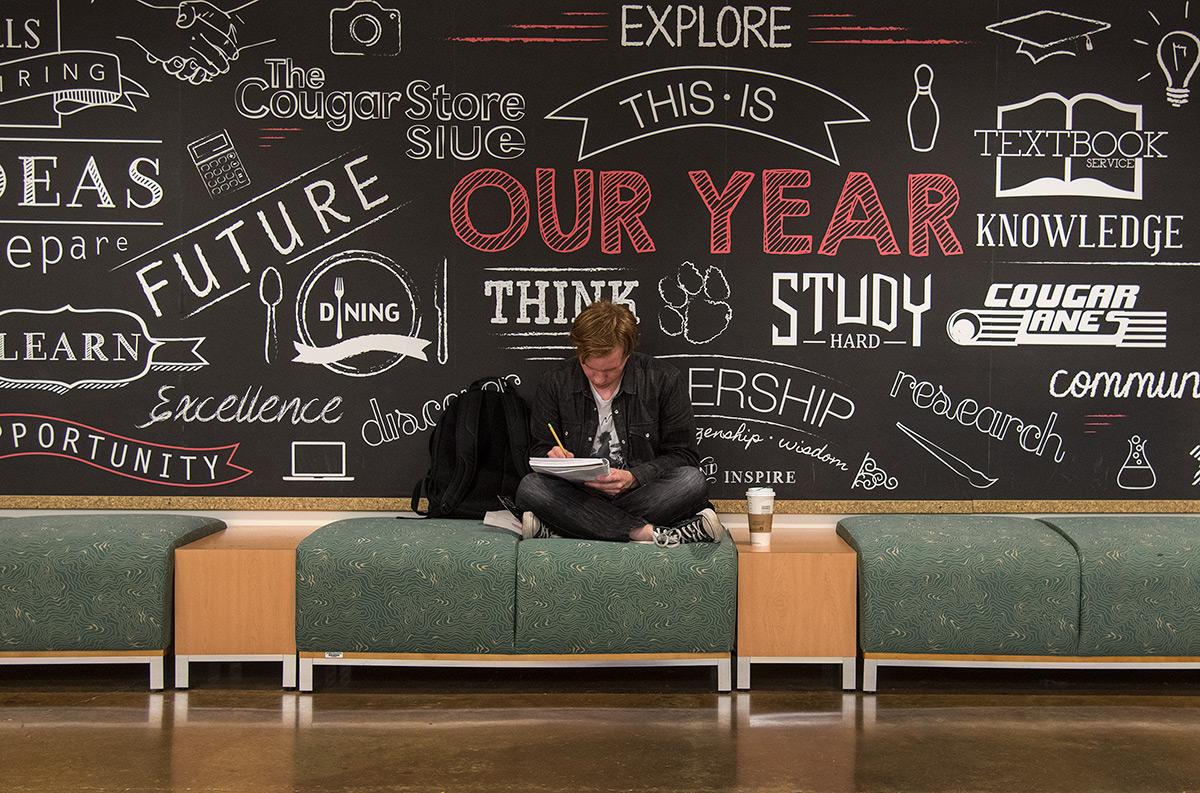
While administrators consider Edwardsville more of a regional campus, 9 percent of SIUC students came to the university from another country in fall 2015, compared to just 3 percent of those at SIUE.
Other factors affecting SIUC’s enrollment
- In the 1990s, the Carbondale campus had more associate degree programs, such as in construction technology and electronics technology, than it does today, said Terri Harfst, director of financial aid who also works as interim director of undergraduate admissions. Community colleges began offering those two-year degrees, which Harfst described as “big enrollment numbers for us.” “It’s unfair to compare today’s numbers with the mid-90’s because we don’t have the same programs that we did back then to make that apple-to-apple comparison,” she said.
- The University of Illinois, which Ford described as “the big gorilla in the game,” recently lowered its entry standards for Illinois students. The provost said the state’s largest university system took more students from other state schools for this reason.
- Ford said SIUC could better use its alumni to help recruitment and fundraising efforts. One example, she said, is the launch of a trial program by the SIU Alumni Association in which 200 graduates will connect with current students as mentors through email.
Staff writer Luke Nozicka can be reached at 618-536-3325, lnozicka@dailyegyptian.com or on Twitter @lukenozicka.
To stay up to date with all your SIU news, follow the Daily Egyptian on Facebook and Twitter.
Advertisement








